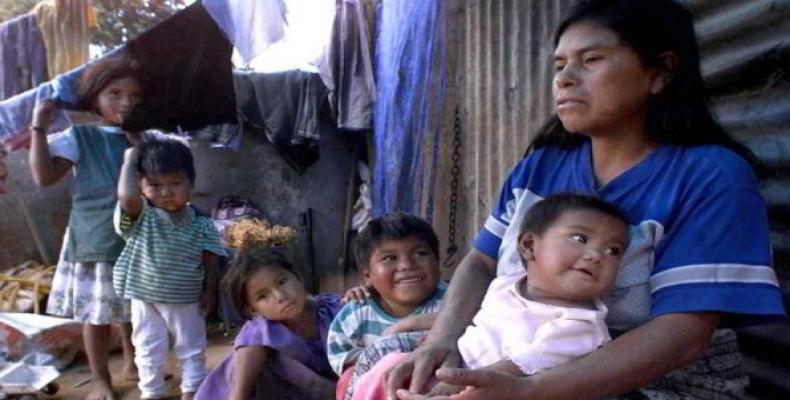Guatemala City, November 23 (teleSUR-RHC)-- Fewer Guatemalans are facing acute malnutrition than last year with a 13.4 percent drop between October 2014 and 2015.
According to Guatemala’s state food security and nutrition agency known as Sesan, 12,148 Guatemalan children showed signs of malnutrition at the end of October 2015, compared to 13,919 children at the same time last year.
Some of the initiatives credited with helping to secure the drop in acute malnutrition include breastfeeding promotion and resources and food delivery programs, among others.
But the food security agency also admitted that follow-through with state resources and programs has been systematically lacking. Only 49 percent of funds allocated to combat hunger and malnutrition in the first 10 months of 2015 were actually delivered, Sesan said.
Experts suggest that chronic poverty, disease, and lack of access to land, especially for women, to boost food security locally are some of the underlying causes of malnutrition in Guatemala.
Earlier this year, the U.N. State of Food Insecurity report found hunger has dropped worldwide and in Latin America. In Central America, undernourishment decreased by about 38 percent, according to the report.
But the news of decreased acute malnutrition also comes as nearly one million Guatemalans have faced increased hunger and food shortages in recent months in the face of drought-parched farmlands and months without rain. The harsh drought, brought on by a strong El Niño climatic effect this year, threatens the already fragile food security in Central America.
Just over half of Guatemala’s population of 15 million live in poverty and about 50 percent of children under five years old suffer chronic undernourishment, according to the U.N. World Food Program. The statistics are even more pronounced among Indigenous communities.
Guatemala is home to the fourth highest chronic malnutrition rate in the world.
Acute Malnutrition of Children Falls 13 Percent in Guatemala

Matérias relacionadas
Comentários
Deixe um comentário
Todos os campos são requeridos
Reproduzindo agora
24 Horas en el mundo
A seguir
- Desde Mi Habana
- La Trova Cubana
- Un lugar para la poesía
Mais vistas
- Playa Girón: a vitória de Cuba sobre o imperialismo
- Venezuela descreve comunicado do Equador como grosseiro e mal-armado
- A arte das estátuas vivas em Cuba
- Díaz-Canel preside cerimônia que marca 64º aniversário da vitória em Girón
- EUA informam Rússia sobre consultas com representantes da Ucrânia em Paris

